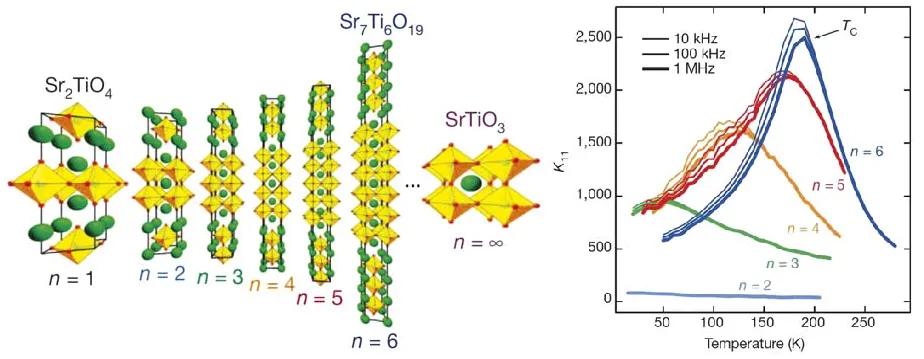The miniaturization and integration of frequency-agile microwave circuits — relevant to electronically tunable filters, antennas, resonators and phase shifters — with microelectronics offers tantalizing device possibilities, yet requires thin films whose dielectric constant at gigahertz frequencies can be tuned by applying a quasi-static electric field. Appropriate systems such as BaxSr1−xTiO3 have a paraelectric–ferroelectric transition just below ambient temperature, providing high tunability. Unfortunately, such films suffer significant losses arising from defects. Recognizing that progress is stymied by dielectric loss, we start with a system with exceptionally low loss — Srn+1TinO3n+1 phases — in which (SrO)2 crystallographic shear planes provide an alternative to the formation of point defects for accommodating non-stoichiometry. Here we report the experimental realization of a highly tunable ground state arising from the emergence of a local ferroelectric instability in biaxially strained Srn+1TinO3n+1 phases with n ≥ 3 at frequencies up to 125 GHz. In contrast to traditional methods of modifying ferroelectrics — doping or strain — in this unique system an increase in the separation between the (SrO)2 planes, which can be achieved by changing n, bolsters the local ferroelectric instability. This new control parameter, n, can be exploited to achieve a figure of merit at room temperature that rivals all known tunable microwave dielectrics.
